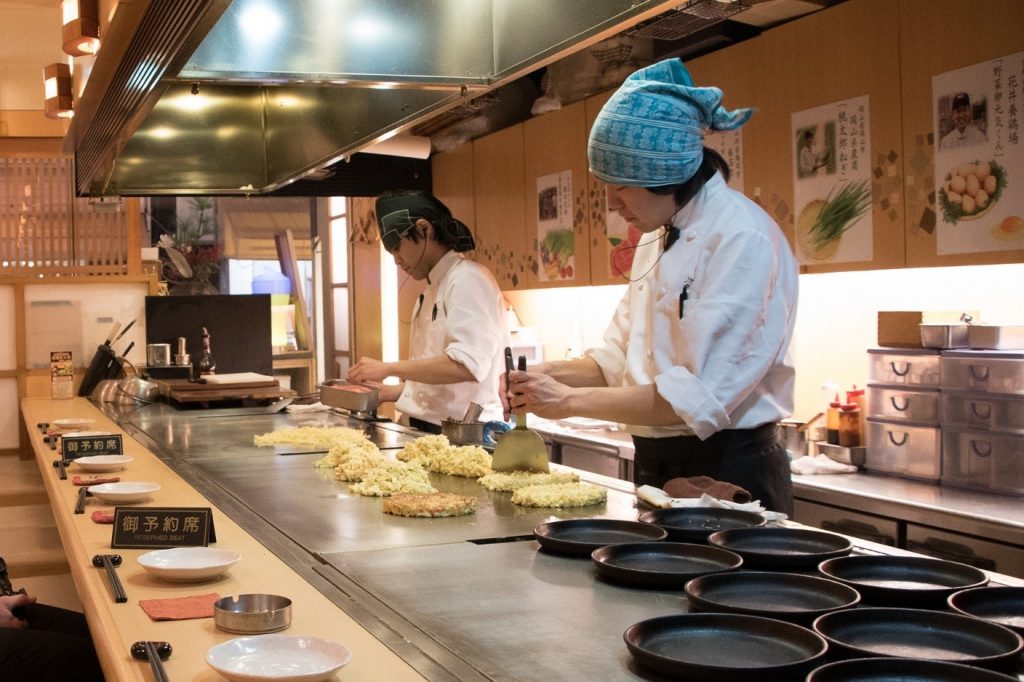Japan has a long and rich history when it comes to sword crafting. As a result, it is no wonder why they also have one of the best kitchen knives in the world. A lot of skill, time, and mastery goes into the manufacturing of these knives, and the prices will obviously reflect that. What you have probably guessed until now is that there are a lot of styles and types of Japanese chef knives each with their own characteristics and local flavor. In this article, we will be discussing how exactly they are manufactured, their function, and other elements specific to this school of kitchen knives. Here is why Japanese chef knives are the best choice.
Manufacturing Techniques
Unsurprisingly, the techniques employed to manufacture Japanese kitchen knives are similar to those used by medieval sword makers. All of the characteristics of their chef knives, from the design, curvature, blade, shape and other features are the results of techniquse and skills carefully honed over the centuries and passed from father to son.
As further proof for the superiority of the Japanese chef knife is the fact they are manufactured using a technique that involves laying hard steel on a soft iron base, a technique which is specific to the sword-making mastery that brought us samurai weapons such as the katana and others. If you want to find out more technical details about this whole process, make sure to check out https://chefknives.expert/, a website filled with guides, tutorials and well-written reviews about the best chef knives.
However, there is no single method of forging and laminating the blades, but the results are always the same – they have razor-sharp edges and are highly resistant to chipping. Traditional Japanese knife forging is a whole, complex process, which involves a tightly knit division of work throughout which each craftsman uses his special skills to handle a certain, predetermined aspect of the knife. For example, the master who handles the forging of the knife is not the same one that sharpens it – this job will be handed to another highly-skilled master who had dedicated his life to this activity.
How to Spot an Authentic Japanese Knife
Due to Japan’s rich history in knife manufacturing, their products come in many shapes and forms. European chef knives are usually designed to handle rough kitchen tasks, such as hacking through thick chunks of meat and cutting hard produce. On the other hand, Japanese knives are arguably more delicate (in spite of the hardness of the steel), designed for specialized tasks – for example, cutting food in elaborate shapes without ruining the overall aspect of it.
However, not all Japanese knives are built equal. While browsing for the perfect knife, you might encounter products that are deemed as ‘’Japanese’’ without being forged by local craftsmen. As a result, it is important to make the distinction between true, authentic, handcrafted Japanese knives and Japanese ‘’style’’ knives, which in most cases are manufactured in China.
The center of authentic Japanese knife manufacturing is in the city of Sakai, located in Osaka. This city’s tradition of manufacturing the highest quality handmade knives can be traced back to the 16th century when a few master swords-makers decided to apply their skills to other fields and started making knives for tobacco cutting. Since then, the city of Sakai, along with various locations in the Fukui, Kochi, Gifu and Niigata prefectures have become the main sources of top quality chef knives, with Sakai alone holding 90 % of shares of industrial knives used by the best chefs in the world.
Therefore, if you are looking for the highest quality materials and construction, you should do the proper research and find out if the blade was manufactured in Japan. This is not to say that knives built in China are bad – because they are relatively cheap, you can buy one to do a sort of trial run to see if Japanese knives are to your liking.
Types of Japanese Chef Knives
After this short history lesson, it is time to discuss the various types of Japanese chef knives and their purposes. Since this subject is vast enough to merit a separate article of its own, we will be focusing on the ones that are the most common:
- Gyuto/Gyutou – Regarding design and utility, this particular type is kind of a hybrid between the traditional Japanese Nakiri and the standard Western chef’s knife. It is a multipurpose kitchen instrument, designed for a wide range of tasks such as slicing vegetables, meat, and Thus, its blade is longer, thinner and nimbler than usual.
- This is another multipurpose kitchen knife, similar from a structural standpoint to the gyuto, but much shorter and thinner. In fact, it is a combination between the gyuto and the nakiri. It is very agile, easy to grasp, and ensures seamless cutting motions.
- A chef’s knife designed solely for slicing vegetables and fish into thin, elegant pieces. Thanks to the construction of the blade, oily and fatty fish will not stick to the blade.
- A traditional vegetable knife, similar to a cleaver. Featuring a flat profile and a straight blade (although some feature a slight curvature), it is good either for crushing hard vegetables or chopping them.
- The Bunka. A medium-sized chef knife which excels at elegantly cutting smaller food items, such as carrots, shallots, celery, garlic and herbs without crushing them.
Conclusion
Japan has a long and rich history in sword making, so it is no wonder why the best chef knives in the world also come from this country. While Western chef knives are designed to handle as many kitchen tasks as possible, the Japanese ones are highly specialized, each excelling at one particular job. If you are serious about cooking and what to take it to the next level, consider buying a Japanese chef knife and you will soon feel like a world-class chef.


Leave a Reply